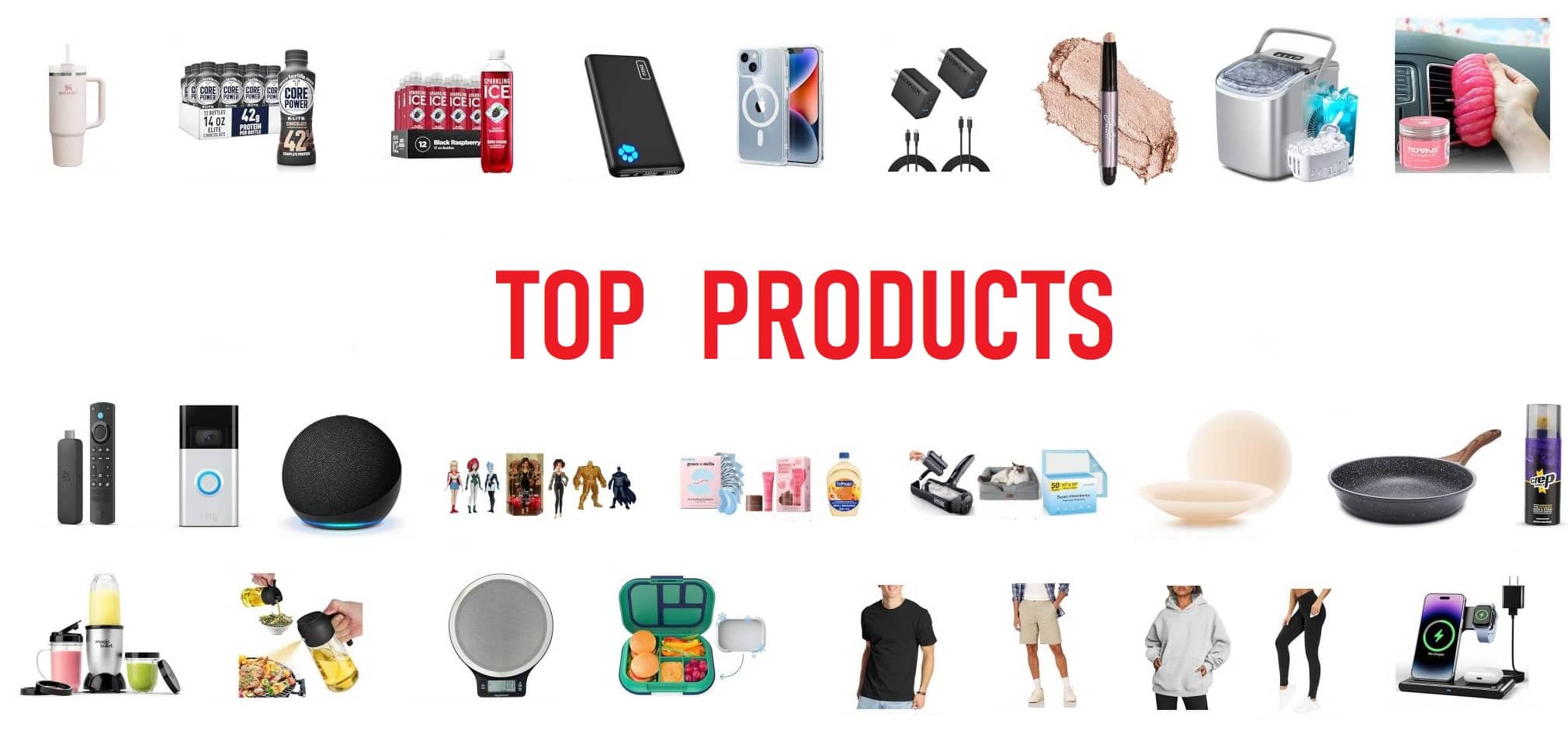Navigating Amazon’s vast marketplace to find the perfect products can feel like searching for a needle in a haystack. Luckily, with the right tools and strategies, you can streamline this process and find profitable products with ease. Whether you’re an experienced seller or just starting, this guide will walk you through the best Amazon product research tools and techniques to help you succeed in 2024.

Best Amazon Product Research Tools for 2024
Finding the right tools is the first step to effective Amazon product research. Here are some of the top tools you should consider:
- Helium 10: This all-in-one suite offers a variety of features like keyword research, product tracking, and competitive analysis. It’s designed to help you uncover high-demand, low-competition products and optimize your listings.
- Jungle Scout: Known for its accuracy and user-friendly interface, Jungle Scout provides data on product sales, reviews, and market trends, helping you make informed decisions about which products to sell.
- Viral Launch: This tool focuses on product discovery, keyword research, and market intelligence. It offers insights into product performance and helps you identify emerging trends.
How to Use Chrome Extensions for Amazon Product Research
Chrome extensions can be incredibly helpful for on-the-go research. Here’s how you can use them effectively:
- Install Extensions: Start by adding extensions like Jungle Scout or Helium 10 to your browser. These tools offer quick data access directly on Amazon’s product pages.
- Analyze Data: Use the extension to view sales estimates, review counts, and competition levels. This immediate data helps you make quick decisions without leaving the Amazon site.
- Compare Products: Extensions often let you compare multiple products side by side, so you can evaluate potential winners more efficiently.
Analyzing Amazon’s Best Sellers List for Profitable Products
Amazon’s Best Sellers list is a goldmine for product research. Here’s how to leverage it:
- Identify Trends: Look for products that consistently rank high. These are usually in high demand and can be profitable.
- Evaluate Competition: Check how many sellers offer similar products. Less competition often means more opportunities for new entrants.
- Read Reviews: Reviews can provide insights into customer preferences and potential product improvements.
Step-by-Step Guide to Finding Winning Products on Amazon
Finding winning products requires a methodical approach. Follow these steps:
- Start with a Niche: Choose a niche based on your interests or market research. This will help you focus your efforts.
- Use Research Tools: Utilize tools like Helium 10 or Jungle Scout to gather data on product performance and demand.
- Analyze Keywords: Look for high-volume, low-competition keywords to target in your product listings.
- Check Competitors: Evaluate competitor listings to see what they’re doing well and where you can differentiate.
- Test Products: Consider launching a small batch to test the market before committing to larger orders.
How to Identify High-Volume, Low-Competition Keywords on Amazon
Keywords are crucial for visibility on Amazon. Here’s how to find the right ones:
- Use Keyword Research Tools: Tools like Helium 10 and MerchantWords can help you discover keywords with high search volume and low competition.
- Analyze Search Trends: Check Amazon’s search bar and related searches for keyword ideas.
- Evaluate Competitor Listings: Look at top-performing competitors and see what keywords they are targeting.
Top Free Tools for Amazon Product Research
If you’re on a budget, there are still plenty of free tools available:
- Google Trends: Great for understanding market trends and seasonal fluctuations.
- Amazon’s Own Tools: Use Amazon’s search bar and related searches to gauge product interest.
- Keepa: Offers price tracking and historical data for products on Amazon.
How to Use Competitor Analysis for Amazon Product Selection
Competitor analysis is essential for identifying market opportunities:
- Study Their Listings: Look at their product descriptions, images, and pricing strategies.
- Check Their Reviews: Analyze customer feedback to find common pain points and areas for improvement.
- Monitor Their Sales: Use tools like Helium 10 to track competitor sales and performance.
How to Perform a SWOT Analysis for Amazon Products
A SWOT analysis helps you understand a product’s Strengths, Weaknesses, Opportunities, and Threats:
- Strengths: Identify what makes the product unique or better than competitors.
- Weaknesses: Recognize potential drawbacks or challenges.
- Opportunities: Look for market gaps or trends you can exploit.
- Threats: Consider potential risks from competitors or market changes.
Product Research Mistakes to Avoid on Amazon
To ensure success, avoid these common mistakes:
- Ignoring Data: Always base decisions on solid data rather than assumptions.
- Overlooking Competition: Failing to analyze competition can lead to entering saturated markets.
- Neglecting Reviews: Not paying attention to customer reviews can mean missing out on valuable feedback.
Best Practices for Analyzing Amazon Product Listings
Effective listing analysis involves:
- Optimizing Titles and Descriptions: Make sure your listings are clear, descriptive, and include relevant keywords.
- High-Quality Images: Use high-resolution images that showcase your product from multiple angles.
- Competitive Pricing: Price your products competitively while ensuring you maintain a healthy margin.
Using Market Trends to Identify Hot-Selling Amazon Products
Keeping an eye on market trends helps you stay ahead:
- Follow Industry News: Stay updated on industry news and emerging trends.
- Use Trend Analysis Tools: Tools like Google Trends and Jungle Scout can provide insights into current market demands.
Amazon Product Research Checklist for Beginners
For those new to Amazon product research, here’s a handy checklist:
- Define Your Niche: Identify your target market and product categories.
- Research Tools: Select and set up your research tools.
- Analyze Data: Gather and evaluate data on potential products.
- Test Products: Conduct small-scale tests before full-scale launches.
- Optimize Listings: Ensure your product listings are optimized for search and sales.
Best Product Sourcing Strategies for Amazon Sellers
Effective sourcing strategies include:
- Finding Reliable Suppliers: Use platforms like Alibaba or contact manufacturers directly.
- Evaluating Costs: Consider all costs, including production, shipping, and Amazon fees.
- Building Relationships: Develop strong relationships with suppliers to negotiate better terms and ensure quality.
How to Evaluate Product Health Scores on Amazon
Product health scores give you insights into how well a product is performing:
- Check Sales Metrics: Analyze sales volume and growth trends.
- Review Feedback: Evaluate customer reviews and ratings.
- Monitor Inventory Levels: Ensure you have adequate stock to meet demand.
Identifying Seasonal Trends for Amazon Product Launches
Seasonal trends can impact product performance:
- Analyze Historical Data: Look at past sales data to identify seasonal patterns.
- Plan Ahead: Launch products ahead of peak seasons to capitalize on increased demand.
Leveraging Customer Reviews for Product Research on Amazon
Customer reviews offer valuable insights:
- Identify Common Complaints: Look for recurring issues in reviews to address in your product.
- Understand Preferences: Use reviews to understand what customers like or dislike about similar products.
How to Conduct a Competitive Analysis Using Amazon Data
Competitive analysis helps you position your product effectively:
- Gather Data: Use tools like Helium 10 to collect data on competitor products.
- Analyze Strategies: Evaluate their pricing, marketing, and product features.
- Identify Gaps: Find opportunities where you can offer better value or differentiate.
How to Use PPC Data for Amazon Product Research
PPC data provides insights into product performance:
- Track Keywords: Monitor which keywords are driving the most traffic and conversions.
- Analyze ROI: Evaluate the return on investment for your PPC campaigns.
- Optimize Ads: Adjust your PPC strategy based on performance data to improve results.
Finding Untapped Niches on Amazon in 2024
Discovering untapped niches involves:
- Exploring Emerging Trends: Use trend analysis tools to find new market opportunities.
- Analyzing Market Gaps: Look for areas with high demand but low competition.
- Innovating: Consider how you can offer unique products or solutions in these niches.
Amazon Product Research for Private Label Sellers
Private label sellers should focus on:
- Building a Brand: Develop a strong brand identity to stand out.
- Ensuring Quality: Work with reliable manufacturers to ensure product quality.
- Marketing Strategies: Create effective marketing strategies to promote your private label products.
By using these strategies and tools, you can effectively navigate the Amazon marketplace and find products that will succeed. Happy researching and selling!
For more information on these tools and strategies, visit Amazon Seller Central and explore the latest updates in product research and sourcing.







